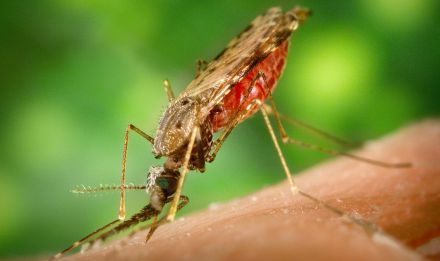Quit Bugging Me!

Mosquito Radar registers whether and where mosquitoes are active this winter, what types of mosquitoes they are and whether people actually experience any inconvenience from them. Leading researcher Van Vliet explains that they already had more than 3000 sightings from the public and over 1500 mosquitoes sent to the Laboratory of Entomology. A bigger response than expected for mosquitoes at this time of year. They’ve had so many responses in fact that they had to pull the submission deadline forward from the end of March to February 15th.
The common house mosquito is the most abundant mosquito species in the Netherlands and luckily it lies dormant all winter. The molestus mosquito is closely related to the common house mosquito and indistinguishable without DNA analysis. Molestus remains active in winter and seems to have a preference for mammalian blood unlike other winter-active species which tend to feed on birds. Molestus may be a carrier of the potentially deadly West Nile Virus, currently unknown in the Netherlands although cases have occurred in south European countries.
Only a few legs needed
Van Vliet has to laugh when describing the variety of ways people send him their mosquitoes, “you don’t want to know how many ways people send us mosquitoes”, he says. Many people try to send in live mosquitoes, which causes more chuckling at the idea of people stalking and trapping live mosquitoes. Particularly because when samples arrive they go straight into a freezer to preserve them. People use all sorts of containers for their mosquito imprisonment including medicine boxes, contact lens cases and the particularly memorable half shell of a walnut.
When the mosquito arrives at the University students visually identify the sample (unless it is too squashed) and then the samples undergo DNA testing to determine whether or not they are the intriguing Molestus variety. For this the researchers “only need a few legs”.
Other bugs
This is not the first unconventional research project van Vliet has been involved in, nor is it the first time people have sent him their blood-sucking pests. Over the next couple of months as the year turns into spring, Dr van Vliet’s website Allergy radar, will increase in activity. It provides live up-to-date hayfever information for the Netherlands.
Van Vliet explains that many people with hayfever don’t know which pollen they are sensitive to, or when that species begins to flower. On the website people are asked to report the amount of hayfever symptoms they experience. They rate their symptom severity from 1 to 10 taking into consideration things like whether their eyes are watering or they if have a runny nose . This information is coupled with data on pollen concentration and which plants are flowering. Hayfever sufferers can then get personalised information regarding their hayfever and warnings of when it will be aggravated.
133 billion insects killed in traffic every June
The summer months bring back the activity of Tick Radar where anyone who gets bitten by a tick can report it and again samples can be sent in to the lab, this case the lab of the National Institute of Public Health and the Environment. Ticks in the Netherlands can transmit Lyme disease so after ticks are sent in, participants receive information on whether or not their tick was a carrier.
Van Vliet is also keen to describe his experience with Splash Teller, a project he ran a couple of years ago where people had to report the number of dead insects they found on their licence plate after a drive. From a sampling point of view, license plates are all standardised, they’re all the same size so provide a good comparison. He claims there’s a great power to involving the general public in research, particularly if you can link it to their daily activity, such as going for a drive.
The results of Splash Teller concluded that 2 bugs were killed every 10 km which can be extrapolated to 133 billion insects killed by car in the Netherlands every month in the summer, a figure which was cited in international news.
1300-year climate study
Patterns in mosquito behaviour, pollen production and even general counts of insect numbers are changing along with the changing climate. Even more importantly, they have potentially dramatic consequences for human health.
Van Vliet’s background is in the impact of climate change on nature, how these changes affect people and how people can adapt to these changes. It’s important to make people aware of the vast amount of research and information that is available about this and he claims his own goal is “to bring nature into the news domain to increase the interest of society in nature”. He does this by extensive cooperation with media.
By collecting this data now we are also providing a reference for the future. Natuurkalender, a website showing live sightings and occurrences of plants and wildlife in the Netherlands, already has data going back to 1868, enabling more accurate comparisons and trends to be drawn. Due to current extreme warm winter, the development in nature is already more than one month ahead of the average schedule 50 years ago.
However the data series gives a reference over time, internationally it is nowhere near unique. “There is a Finnish data set going back to the 1700s and Japanese information on the flowering of cherry blossom which goes as far back as 841.”
Meest Gelezen
Wederom intimidatie van journalisten door universiteit, nu in Delft
‘Burgerschapsonderwijs moet ook verplicht worden in hbo en wo’
Raad van State: laat taaltoets nog niet gelden voor hbo-opleidingen
Vrouwen houden universiteit draaiende, maar krijgen daarvoor geen waardering
Extra geld voor bètafaculteiten is daar nooit terechtgekomen

